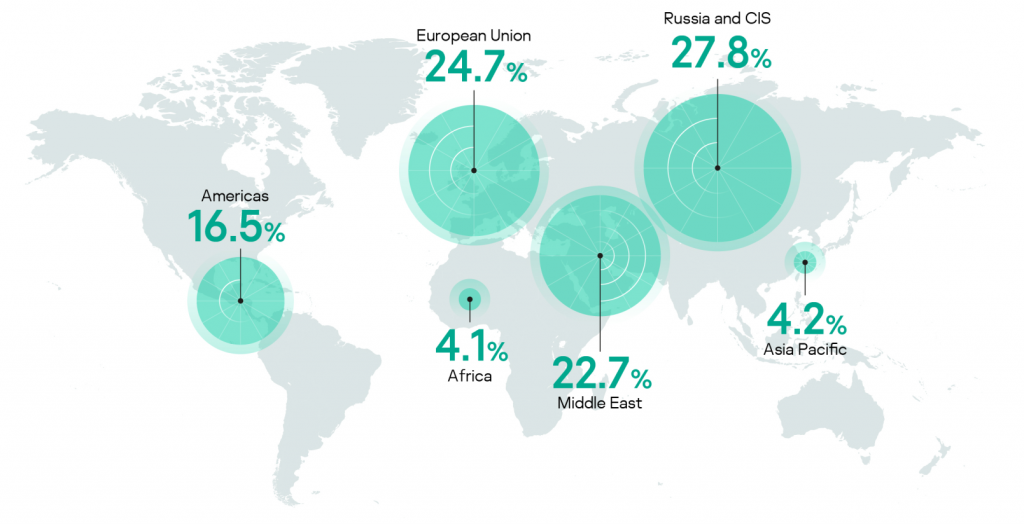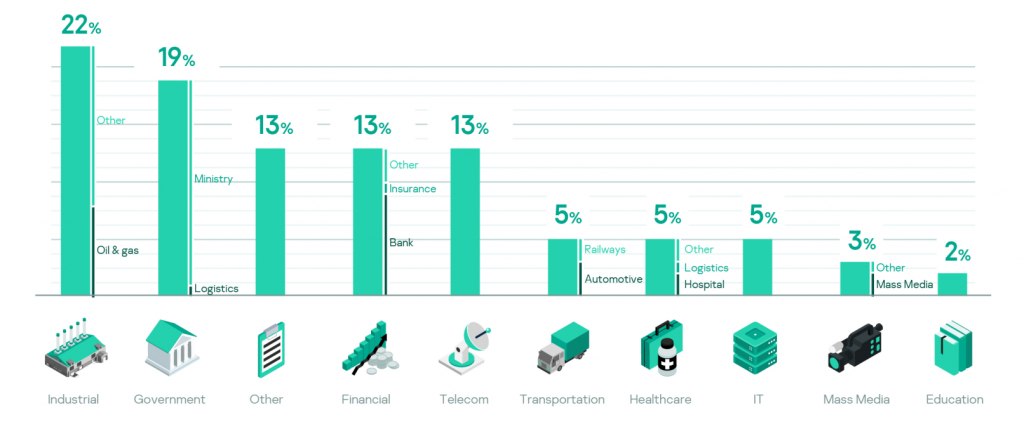
The Incident response analyst report provides insights into incident investigation services conducted by Kaspersky in 2020. We deliver a range of services to help organizations when they are in need: incident response, digital forensics and malware analysis. Data in the report comes from our daily practices with organizations seeking assistance with full-blown incident response or complementary expert activities for their internal incident response teams.
In 2020, the pandemic forced companies to restructure their information security practices, accommodating a work-from-home (WFH) approach. Although key trends in terms of threats have stayed the same, our service approach moved to a near-complete – 97% of all cases – remote delivery.
Geography of incident responses by region, 2020
Most of the incident handling requests were received from the CIS (27.8%), European Union (24.7%) and the Middle East (22.7%) regions. In 2020, organizations seeking our assistance represented a wide spectrum of business sectors, industry, finance, government, telecoms, transportation and healthcare.
Share of incident responses by vertical and industry, 2020
Industrial businesses were the most affected by cyberattacks (22%), followed by government institutions (19%). Most of our responses were ransomware-related: in 32.7% of true positive cases, the incidents were caused by encrypted files.
Overall, the Incident response analyst report 2020 contains four chapters:
- Reasons to go for incident response
Most of the incidents with causes before the impact can be confidently classified as ransomware. This threat is overtaking money theft and other impacts as a more convenient monetization scheme with much broader industry coverage (not just finance). - Initial vectors, or how attackers got in
Security issues with passwords, software vulnerabilities and social engineering combined into an overwhelming majority of initial access vectors during attacks. - Tools and exploits
Almost half of all incident cases included the use of existing OS tools (like LOLbins), well-known offensive tools from GitHub (e.g. Mimikatz, AdFind, Masscan) and specialized commercial frameworks (Cobalt Strike). - Attack duration
We grouped all incident cases into three categories with different attacker dwell times, incident response duration, initial access, and impact from the attack.
To learn more on these topics, please read the full report (English, PDF).




















Incident response analyst report 2020